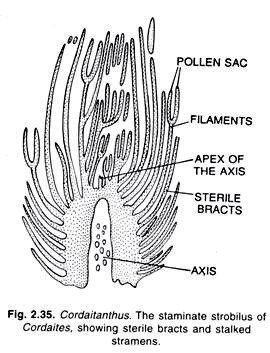ADVERTISEMENTS:
The below mentioned provides a short note on the transcription in eukaryotes.
Transcription occurs in eukaryotes in a similar way to prokaryotes. However, initiation is more complex, termination does not involve stem-loop structures and transcription is carried out by three enzymes (RNA polymerases I, II, III), each of which transcribes a specific set of genes and functions in a slightly different way.
ADVERTISEMENTS:
RNA Polymerase II:
This enzyme transcribes genes that encode proteins. Binding of RNA polymerase II to its promoter involves several different DNA sequence elements and a number of proteins called transcription factors. The promoter usually contains a DNA sequence element called the TATA box which acts as the attachment site for the RNA polymerase II.
This has the consensus sequence 5′ TATA(A/T)A(A/T) 3′ and is present about 25 bp upstream from the transcription start site.
Its function is to locate the RNA polymerase at the start of the gene in the correct position to begin transcription. Attachment of the RNA polymerase at the TATA box is achieved with the help of a series of transcription factors specific to RNA polymerase II, referred to as TFIIA, TFIIB, etc.
ADVERTISEMENTS:
These bind to the DNA around the TATA box, form a platform to which the RNA polymerase II is bound. The transcription factors bind in a specific order. TFIID binds first followed by TFIIA and TFIIB. The RNA polymerase II then binds followed by TFII F, E, H and J to produce a functional complex capable of initiating transcription (Fig. 16.7).
Genes that lack a TATA box may contain an alternative initiator element around the transcription start site. A number of other promoter elements with characteristic consensus sequences influence transcription. Examples include the CCAAAT box found upstream of the TATA box in some genes.
Many genes also contain sequences called enhancers that greatly stimulate transcription. Similar sequences known as silencers also occur which inhibit transcription.
Termination of transcription by RNA polymerase II occurs at a point after the end of the protein coding sequence by a mechanism which is uncertain. Termination signals are difficult to identify because the 3′ end of the message is removed shortly after it is transcribed.
It may be that the dissociation of a transcription factor, at some point, destabilizes the transcription complex causing the RNA polymerase to fall of the template at a later time.
RNA Polymerase I:
This enzyme transcribes genes encoding three of four ribosomal RNAs (18S, 28S and 5.8S). The promoter recognized by RNA polymerase I has two important sequence elements required for efficient transcription: a core element overlapping the transcription start site and an upstream control sequence located approximately 100 bp upstream of the transcription start site.
These sequences bind RNA polymerase I and its associated transcription factors. The core sequence is essential for transcription to, occur and the upstream control sequence is involved in stimulating the rate of transcription initiation. A termination signal consisting of an 18 bp consensus sequence is present about 600 bp after the end of the gene.
ADVERTISEMENTS:
RNA Polymerase III:
This enzyme transcribes a set of short genes that encode transfer RNAs and the 55 ribosomal RNA. The promoter sequences recognized by RNA polymerase III are unusual in that they occur after the transcription start site within the transcribed sequence of the gene.
These are known as internal control regions (ICRs) and they occur within about 100 bases of the transcription start site. The 5S rRNA gene contains a sequence known as the C box which acts as a binding site for transcription factors and RNA polymerase III.
A second sequence upstream known as the A box is also important. For the transfer RNA genes, the ICR is present as two highly conserved sequences known as the A box and the B box which together act as a binding site for transcription factors and the RNA polymerase III.
ADVERTISEMENTS:
Termination of transcription by RNA polymerase III occurs at a DNA sequence recognized by the enzyme which contains a run of A residues and which occurs soon after the end of the gene.

